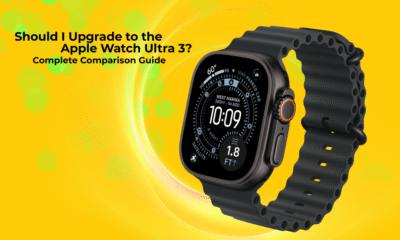Wearables
An Epic Meta Smart Glasses Review: A Year with Ray-Ban’s Smart Spectacles

Rayban Meta Smart Glasses
In the ever-evolving landscape of wearable technology, smart glasses stand as a beacon of ambition, promising to seamlessly blend the digital and physical worlds. Among the contenders, the Meta Ray-Ban smart glasses have carved out a unique niche, marrying the iconic style of Ray-Ban with Meta’s technological prowess. As a user who has lived with these spectacles for a full year, navigating their capabilities and limitations, this Meta Smart Glasses Review delves deep into what makes them a compelling, yet at times frustrating, piece of everyday tech.
My journey with the Meta Ray-Ban smart glasses began a year ago, driven by the allure of hands-free capture and the promise of a more connected, yet discreet, digital experience. Crucially, my pairs are prescription, transforming them from a gadget into an essential part of my daily attire. This integration means they are on my face from morning till night, making their performance, especially battery life, a constant, pressing concern. At over $700 each with prescription lenses, owning multiple pairs to compensate for battery shortcomings is not just an inconvenience; it’s a significant financial commitment.
Design and Aesthetics: The Ray-Ban Legacy Meets Meta’s Vision

The first, and arguably most critical, aspect of the Meta Ray-Ban smart glasses is their design. Unlike many clunky predecessors in the smart eyewear category, these glasses succeed remarkably in looking, well, like regular glasses. This is largely thanks to the collaboration with Luxottica, Ray-Ban’s parent company. The available styles – Wayfarer, Headliner, and the newer Skyler and Beat – are all iconic and widely accepted, ensuring that the technology is subtly integrated rather than overtly announced.
From a distance, and even up close for the uninitiated, they are indistinguishable from standard Ray-Bans. The cameras are cleverly embedded in the top corners of the frames, barely noticeable. The open-ear speakers are tucked into the temples, and the charging contacts are discreetly placed on the underside of the arms. This commitment to conventional aesthetics is a huge win for daily wearability and social acceptance, making them far less intimidating than other smart eyewear options.
For me, the fact that they seamlessly accommodate my prescription lenses was a game-changer. This transforms them from a novelty item into a functional, everyday accessory that I genuinely need to wear. However, this also amplifies the cost factor. Investing in multiple pairs, as I have had to do, quickly escalates the total expenditure, especially when each pair requires custom prescription lenses. This is a crucial consideration for anyone with vision correction contemplating this Meta Smart Glasses Review.
The build quality feels robust, consistent with Ray-Ban’s reputation. They are comfortable for extended wear, though slightly heavier than traditional glasses due to the embedded tech. The materials feel premium, and they withstand the rigors of daily life reasonably well. The charging case, designed to resemble a standard glasses case, is also well-made and surprisingly compact, though its smooth finish can make it a bit slippery.
Core Functionality: Capturing Life Through Your Eyes
The primary appeal of the Meta Ray-Ban smart glasses for many, including myself, lies in their hands-free capture capabilities. They offer a unique perspective, allowing you to photograph and record exactly what you see, without fumbling for a phone.
Cameras: Your Personal Viewfinder
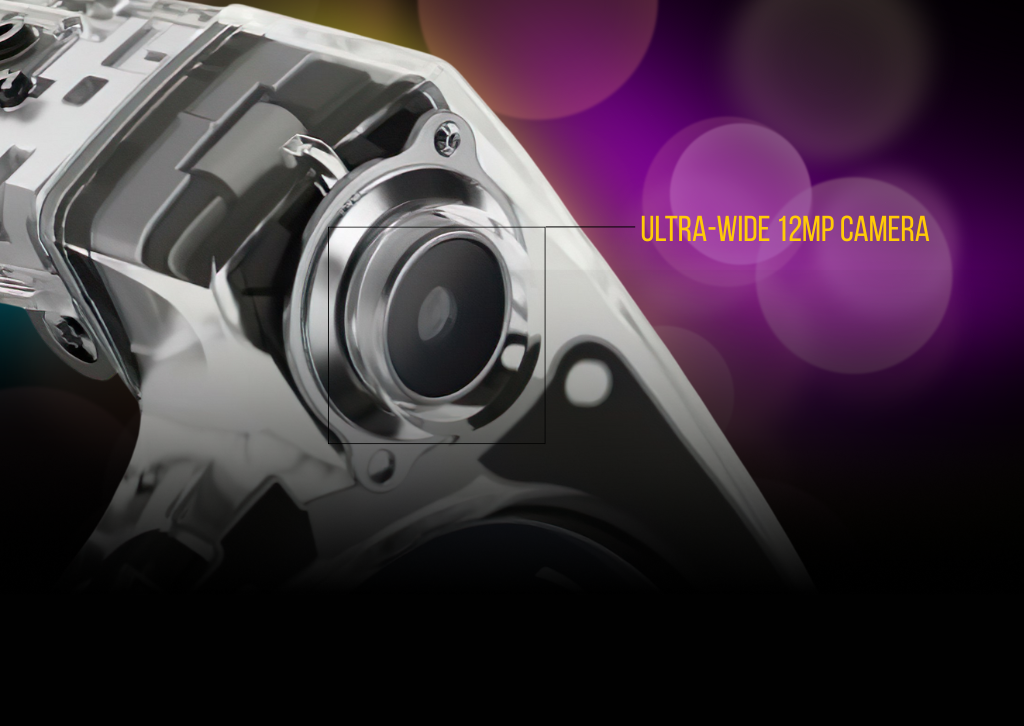
The glasses feature a 12-megapixel ultrawide camera on each side. These cameras are capable of capturing high-resolution photos and 1080p video at 60 frames per second (fps). The ultrawide lens is a thoughtful choice, as it captures a broader field of view, more akin to human peripheral vision, making the resulting media feel more immersive and true to the moment.
Photo Quality: In good lighting, photos are surprisingly crisp and vibrant. They excel at capturing spontaneous moments – a pet doing something funny, a beautiful sunset appearing unexpectedly, or a quick shot of a whiteboard during a meeting. The hands-free nature means you’re less likely to miss these fleeting opportunities. However, in low-light conditions, performance degrades, as expected from such small sensors. Images can become noisy, and details are lost.
Video Quality: The 1080p at 60fps video is smooth and clear, especially for short clips. It’s perfect for capturing quick bursts of action, like a child’s first steps, a short segment of a concert, or a cooking demonstration from a first-person perspective. The stabilization, while not cinematic, is effective enough for casual use, reducing shakiness from head movements.
Usage Examples for Capture:
- Spontaneous Moments: Imagine walking through a park and suddenly seeing a rare bird. A quick “Hey Meta, take a photo” captures it instantly, without breaking your stride or pulling out your phone.
- Cooking Demonstrations: For content creators, recording a recipe from a first-person perspective offers a unique, engaging view for viewers.
- Travel Vlogging: Documenting your journey hands-free, capturing the sights as you experience them, adds an authentic feel to travel content.
- Family Events: Being fully present at a birthday party or holiday gathering while still capturing precious memories, rather than being glued to a phone screen.
- Live Streaming: The ability to livestream directly to Instagram and Facebook Live is a standout feature. This allows for truly immersive, real-time sharing of experiences. Picture sharing a live walk through a bustling market, or a spontaneous performance, all from your perspective. This is where the “Meta Smart Glasses Review” truly shines for social media enthusiasts.
Privacy Considerations: The Blinking Light
Meta has made efforts to address privacy concerns by including a small, visible LED light next to the camera that illuminates when recording or taking photos. This is intended to alert those around you that you are capturing media. While a step in the right direction, its effectiveness is debatable. In bright sunlight, the light can be hard to see, and its small size might not be immediately obvious to everyone. This remains a sensitive area, and users must exercise discretion and respect for others’ privacy when using the capture features.
Core Functionality: Audio Immersion and Communication
Beyond visual capture, the Meta Ray-Ban smart glasses are designed to be a comprehensive audio device, integrating music, podcasts, and communication seamlessly into your daily routine.
Open-Ear Speakers: Sound Without Isolation

The glasses feature open-ear speakers integrated into the temples, directing sound towards your ears without covering them. This design choice is critical for maintaining situational awareness, allowing you to hear your surroundings while still enjoying your audio content.
Sound Quality: For open-ear speakers, the sound quality is surprisingly good. They offer clear audio for podcasts and spoken word content. Music is enjoyable, with decent clarity and a respectable amount of bass for their size. They won’t replace high-fidelity headphones for critical listening, but for casual background music or audio during a walk, they perform admirably. The sound is directional, meaning that while you can hear it clearly, people nearby are less likely to be disturbed, especially at moderate volumes.
Spatial Audio: The newer models boast spatial audio capabilities, which can enhance the immersive experience, especially for certain types of content. This feature aims to make the sound feel like it’s coming from different directions around you, adding depth to music or making calls feel more natural.
Microphones: Crystal Clear Calls
Equipped with a five-microphone array, the Meta Ray-Ban smart glasses excel at hands-free communication. The microphones are strategically placed to pick up your voice clearly while simultaneously suppressing background noise.
Call Quality: This is where the glasses truly shine. Taking calls through the glasses is a revelation. My call recipients consistently report excellent clarity, even in moderately noisy environments like a busy street or a coffee shop. The noise suppression works wonders, filtering out wind, traffic, and general chatter, making conversations surprisingly intimate and focused. This feature alone makes them incredibly valuable for professionals who spend a lot of time on calls or for anyone who wants to stay connected without constantly holding a phone to their ear.
Usage Examples for Audio:
- Hands-Free Calls: Taking a call while walking the dog, doing chores, or carrying groceries, keeping your hands free for other tasks.
- Podcast Listening on the Go: Enjoying your favorite podcasts during a commute or a leisurely stroll, without blocking out ambient sounds like traffic or announcements.
- Music While Active: Listening to music during a run or bike ride, while still being aware of your surroundings for safety.
- Navigational Audio: Receiving turn-by-turn directions directly into your ears, allowing you to keep your eyes on the road or path.
- Ambient Awareness: The open-ear design is perfect for situations where you need to be aware of your environment, such as parenting, working in an office, or simply enjoying the sounds of nature while listening to a subtle soundtrack.
Meta AI Integration: A Glimpse into the Future
One of the most exciting, and rapidly evolving, features of the Meta Ray-Ban smart glasses is the integration of Meta AI. This brings a layer of intelligence to your daily interactions, moving beyond simple capture and audio to offer real-time assistance.
Voice Commands: “Hey Meta”
The core of the AI interaction is the “Hey Meta” voice command. This activates the AI, allowing you to issue commands for capture, control, and information.
Capabilities:
- Capture Control: “Hey Meta, take a photo,” “Hey Meta, record a video,” “Hey Meta, start a livestream.”
- Media Control: “Hey Meta, play music,” “Hey Meta, pause,” “Hey Meta, next song,” “Hey Meta, volume up.”
- Call Management: “Hey Meta, answer call,” “Hey Meta, hang up.”
- Information Retrieval: This is where the AI truly begins to show its potential. You can ask general knowledge questions, set timers, get weather updates, and more.
Multimodal AI: Vision and Audio Combined
The true innovation lies in the multimodal capabilities of Meta AI, which leverages both the cameras and microphones to understand your environment and provide contextual information. This feature allows the glasses to “see” and “hear” what you do, offering a new dimension of assistance.
Usage Examples for Meta AI:
- Real-Time Information:
- Identifying Landmarks: “Hey Meta, what am I looking at?” – The AI can identify famous buildings, monuments, or even types of trees.
- Translating Signs: “Hey Meta, translate this sign.” – Point your head at a foreign language sign, and the AI can provide a translation directly into your ear.
- Object Identification: “Hey Meta, what is this?” – Point at an unfamiliar object, and the AI can tell you what it is. This is particularly useful for identifying plants, animals, or even specific products in a store.
- Contextual Assistance:
- Fashion Advice: “Hey Meta, do these shoes match my outfit?” – The AI can analyze your attire and offer a quick opinion.
- Recipe Ideas: “Hey Meta, what can I make with these ingredients?” – Show the AI what’s in your fridge, and it can suggest recipes.
- Sports Commentary: “Hey Meta, what’s happening in the game?” – If you’re watching a sports event, the AI can provide real-time updates or explanations.
- Troubleshooting: “Hey Meta, how do I fix this?” – Point at a broken appliance, and the AI might offer basic troubleshooting steps.
Limitations and Future Potential: While incredibly promising, the Meta AI is still evolving. Its accuracy and breadth of knowledge are constantly improving, but it’s not infallible. There will be instances where it struggles to identify objects or answer complex, nuanced questions. However, the potential for this technology to become a truly intelligent, always-on assistant is immense, and it’s exciting to see Meta pushing the boundaries in this Meta Smart Glasses Review.
The Elephant in the Room: Battery Life and Charging
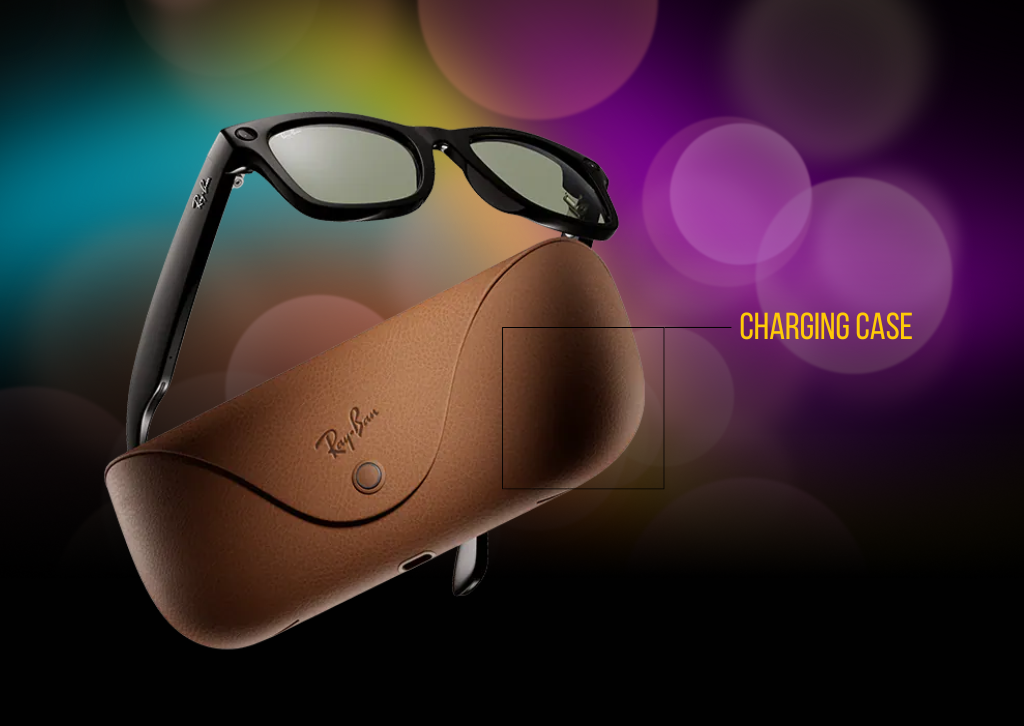
This brings us to the most significant pain point in my year-long experience with the Meta Ray-Ban smart glasses: battery life. As a heavy video and audio user, and someone who wears these glasses all day due to prescription lenses, the battery performance is simply inadequate for all-day use.
Stated Battery Life vs. Real-World Experience: Meta claims “up to 4 hours” of continuous use for the glasses themselves, with the charging case providing “up to 32 hours” of additional charge (8 full charges). In my experience, these figures are optimistic for heavy users.
My Reality: “Just a couple of hours” is a generous estimate for my usage, especially when I’m actively capturing video, listening to music, or engaging with Meta AI. If I’m recording video for even 10-15 minutes, the battery drains noticeably faster. This means that for true “all-day use,” I would realistically need 2-3 pairs to switch off. I currently own two pairs, and even with that, I often don’t make it through a full day.
The biggest bummer, as you rightly pointed out, is the frustration of reaching for them when you truly want to capture a moment, only to find the battery dead, and the second pair isn’t conveniently at hand. This negates the very spontaneity that is one of their core selling points. The cost implications of needing multiple prescription pairs, each over $700, further exacerbate this issue, making the “solution” of buying more pairs an expensive compromise.
The Charging Case: The charging case is essential. It’s compact and provides multiple charges, which is great in theory. However, it takes about an hour to fully charge the glasses inside the case, and the case itself needs to be charged via USB-C. The problem isn’t the charging speed, but the frequency with which you need to return the glasses to their case. For someone who wears them constantly, this means taking them off and being without them for significant periods throughout the day, or constantly swapping between pairs.
Strategies for Managing Battery Life (Workarounds, Not Solutions):
- Conservative Use: Limiting video recording, using AI sparingly, and keeping audio volume lower.
- Frequent “Top-Ups”: Placing the glasses in the charging case whenever possible, even for short breaks.
- Carrying the Case: Always having the charging case with you, which adds another item to your daily carry.
- Multiple Pairs: As discussed, the most effective, but most expensive, workaround.
The battery life is the Achilles’ heel of the Meta Ray-Ban smart glasses. For casual users who only capture a few photos or take a couple of calls, it might suffice. But for anyone who wants to leverage their full capabilities, especially video and AI, and wear them consistently, it’s a significant limitation that needs urgent improvement in future iterations. This is perhaps the most critical point of this Meta Smart Glasses Review.
Connectivity and App Experience: The Meta View Ecosystem
The Meta Ray-Ban smart glasses rely heavily on the Meta View app, which serves as the central hub for managing your glasses, viewing captured media, and configuring settings.
Meta View App: Your Command Center
The app is well-designed and intuitive. It’s available on both iOS and Android.
- Setup: Pairing the glasses with your phone is a straightforward process.
- Media Management: All photos and videos captured on the glasses are automatically synced to the Meta View app. From there, you can easily review, edit (basic cropping, color adjustments), and share them to various social media platforms or save them to your phone’s gallery. The app organizes media chronologically, making it easy to find specific moments.
- Settings: The app allows you to customize various settings, including voice command preferences, privacy settings, audio equalizer, and AI features.
- Updates: Firmware updates for the glasses are managed through the app, ensuring you always have the latest features and bug fixes.
- AI Features: The Meta View app is also where you manage your Meta AI preferences and review AI interactions.
Connectivity: Bluetooth and Wi-Fi
The glasses connect to your smartphone primarily via Bluetooth for general control, audio streaming, and basic data transfer. For faster media offloading and especially for livestreaming, the glasses can also connect to Wi-Fi. This dual connectivity ensures a smooth experience, whether you’re at home or on the go. The Bluetooth connection has generally been reliable, maintaining a stable link with my phone, though like all Bluetooth devices, range can be a factor.
Storage and Performance: Under the Hood
While Meta doesn’t disclose the exact processor, the glasses perform tasks with reasonable speed. There’s minimal lag when issuing voice commands or initiating capture.
Internal Storage: The glasses come with 32GB of internal storage, which is sufficient for thousands of photos and hundreds of short video clips before needing to offload to your phone. Given the battery life, you’re more likely to run out of power before you run out of storage.
Processing Power: The embedded processor handles the real-time processing required for video recording, audio processing, and initial AI inferences. The heavier AI lifting often happens in the cloud, requiring an internet connection for full multimodal AI functionality.
User Experience and Practicality: Living with Smart Glasses
Living with the Meta Ray-Ban smart glasses for a year has provided deep insights into their practicality and how they integrate into daily life.
Everyday Wearability
As mentioned, their ability to blend in as regular glasses is their superpower. This means you can wear them in most social situations without drawing undue attention. They are comfortable enough for all-day wear, though the slight increase in weight compared to traditional glasses is noticeable at first.
Learning Curve
Getting accustomed to the voice commands (“Hey Meta”) and the tap controls on the temple (for answering calls, pausing music, or initiating capture without voice) takes a bit of practice. However, it quickly becomes second nature. The responsiveness of the voice assistant is generally good, though noisy environments can sometimes lead to misinterpretations.
Social Acceptance and Privacy Concerns
This is a nuanced area. While the glasses look normal, the knowledge that they can record creates a subtle shift in social dynamics. Most people are generally accepting, especially if you’re transparent about their capabilities. However, privacy advocates and those unfamiliar with the technology might express discomfort. The blinking LED is a step, but user etiquette and awareness remain paramount. It’s crucial to be mindful of your surroundings and the people in them.
Prescription Lenses: A Personal and Costly Integration
For me, the prescription integration is non-negotiable. It transforms the glasses from a “nice-to-have” gadget into a fundamental part of my daily vision correction. The process of getting prescription lenses fitted through Meta’s partners (or third-party opticians) is straightforward but adds significantly to the overall cost. At over $700 per pair with my specific prescription, the investment quickly becomes substantial, especially when you need multiple pairs to overcome the battery limitations. This cost factor is a major point in this Meta Smart Glasses Review for anyone with vision needs.
Pros and Cons: A Balanced Perspective
After a year of extensive use, here’s a summary of the strengths and weaknesses of the Meta Ray-Ban smart glasses:
Pros:
- Discreet and Stylish Design: They genuinely look like regular Ray-Ban glasses, allowing for seamless integration into daily life.
- Excellent Hands-Free Capture: The ability to take photos and videos from a first-person perspective, instantly and discreetly, is a game-changer for capturing spontaneous moments.
- Impressive Call Quality: The five-mic array delivers crystal-clear calls, even in noisy environments, making them ideal for hands-free communication.
- Decent Open-Ear Audio: Good sound quality for music and podcasts while maintaining situational awareness.
- Innovative Meta AI Integration: The multimodal AI offers exciting potential for real-time information and contextual assistance, a glimpse into the future of computing.
- Seamless Social Sharing: Easy integration with Facebook and Instagram for livestreaming and sharing captured media.
- Comfortable for All-Day Wear: Lightweight enough for extended use, especially with prescription lenses.
Cons:
- Significant Battery Life Limitations: This is the most critical drawback. “A couple of hours” of heavy use necessitates multiple pairs for all-day functionality, leading to frustration and inconvenience. This is the central issue of this Meta Smart Glasses Review.
- High Cost, Especially with Prescription Lenses: The initial price is considerable, and the added expense of prescription lenses, coupled with the need for multiple pairs due to battery issues, makes them a very costly investment.
- Privacy Concerns: Despite the LED indicator, the potential for discreet recording raises ethical questions and requires user discretion.
- AI Still Evolving: While promising, Meta AI is not always perfect and can have limitations in understanding complex queries or identifying niche objects.
- No Display: Unlike some other smart glasses, there’s no visual display or augmented reality overlay, limiting certain types of interactions.
- Reliance on Smartphone: Requires a connected smartphone for full functionality and media management.
Who Are They For?
The Meta Ray-Ban smart glasses are best suited for:
- Early Adopters and Tech Enthusiasts: Those eager to experience the bleeding edge of wearable technology.
- Social Media Creators and Livestreamers: The hands-free capture and direct livestreaming capabilities are a huge draw.
- Parents and Active Individuals: For capturing spontaneous family moments or documenting activities without interrupting the flow.
- Professionals on the Go: Excellent for hands-free calls and quick note-taking (via photo/video).
- Individuals Seeking Discreet Tech: Those who want smart features without the overt appearance of traditional smart glasses.
They are less ideal for:
- Budget-Conscious Consumers: The price, especially with prescription lenses and the potential need for multiple pairs, is a barrier.
- Users Demanding All-Day, Heavy Use Without Charging Breaks: The battery life simply won’t support it.
- Individuals Prioritizing Privacy Above All Else: While efforts are made, the concept of wearable cameras can be contentious.
Future Outlook: What’s Next for Smart Glasses?
My year with the Meta Ray-Ban smart glasses has been a fascinating journey, highlighting both the immense potential and the current limitations of this technology. The biggest hurdle, unequivocally, is battery life. For smart glasses to truly become ubiquitous, they need to last a full day, even with heavy use, without requiring multiple expensive pairs or constant charging breaks. Improved battery density, more efficient processors, and perhaps even innovative charging solutions (like solar integration) are essential.
Beyond battery, the evolution of Meta AI will be crucial. As the AI becomes more sophisticated, accurate, and capable of handling more complex, real-time multimodal interactions, the utility of the glasses will skyrocket. Imagine genuinely seamless real-time translation, advanced contextual awareness, and even subtle augmented reality overlays (though the current models lack a display).
The Meta Ray-Ban smart glasses represent a significant step forward in the journey towards truly integrated wearable technology. They prove that smart glasses can be stylish and functional, blending into daily life rather than standing out as a futuristic anomaly.
Conclusion: A Promising, Yet Imperfect, Companion
In conclusion, this Meta Smart Glasses Review reveals a product that is both innovative and frustrating. The Meta Ray-Ban smart glasses are a triumph of design, seamlessly integrating powerful cameras, excellent audio, and a burgeoning AI into an iconic form factor. They excel at hands-free capture, offer superb call quality, and provide a glimpse into a future where technology is truly ambient.
However, their Achilles’ heel – the severely limited battery life for heavy users – is a persistent frustration, especially when compounded by the high cost of prescription lenses and the necessity of owning multiple pairs. For all their brilliance in concept and execution, the practical reality of constantly managing dead batteries detracts significantly from the otherwise seamless experience.
Despite these limitations, the Meta Ray-Ban smart glasses are a compelling device. They are not just a gadget; for me, they are a daily companion, albeit one that requires careful battery management. They offer a unique way to interact with the world and capture memories, and they serve as an exciting, tangible step towards the future of personal computing. If Meta can crack the battery code in future generations, these smart glasses could truly become an indispensable part of our daily lives. Until then, they remain a promising, yet imperfect, glimpse into what’s to come.
Wearables
The Apple Watch Series 11 Hermès Edition: Where Haute Horlogerie Meets Digital Innovation
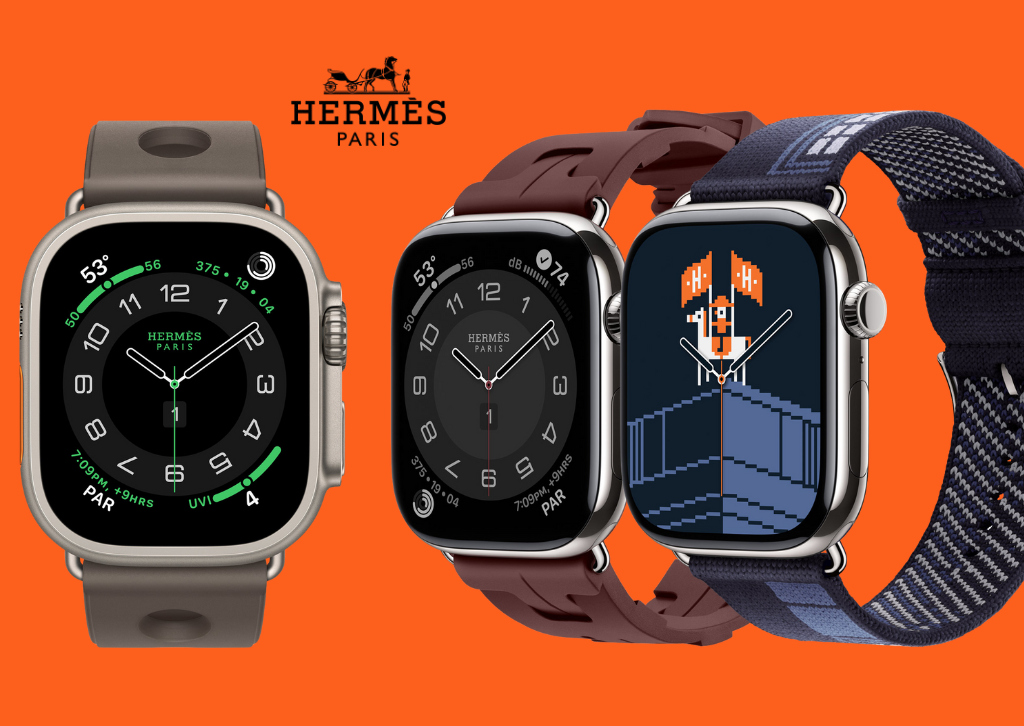
The collaboration between Apple and Hermès continues to redefine luxury smartwatch design, blending Silicon Valley innovation with Parisian craftsmanship in the Series 11 Hermès Edition.
Since Apple first partnered with the legendary French fashion house Hermès in 2015, the technology giant has continuously pushed the boundaries of what a luxury smartwatch can be. The Apple Watch Series 11 Hermès Edition represents the latest evolution of this prestigious collaboration, offering a unique fusion of cutting-edge health technology, premium materials, and the timeless elegance that has defined Hermès for nearly two centuries.
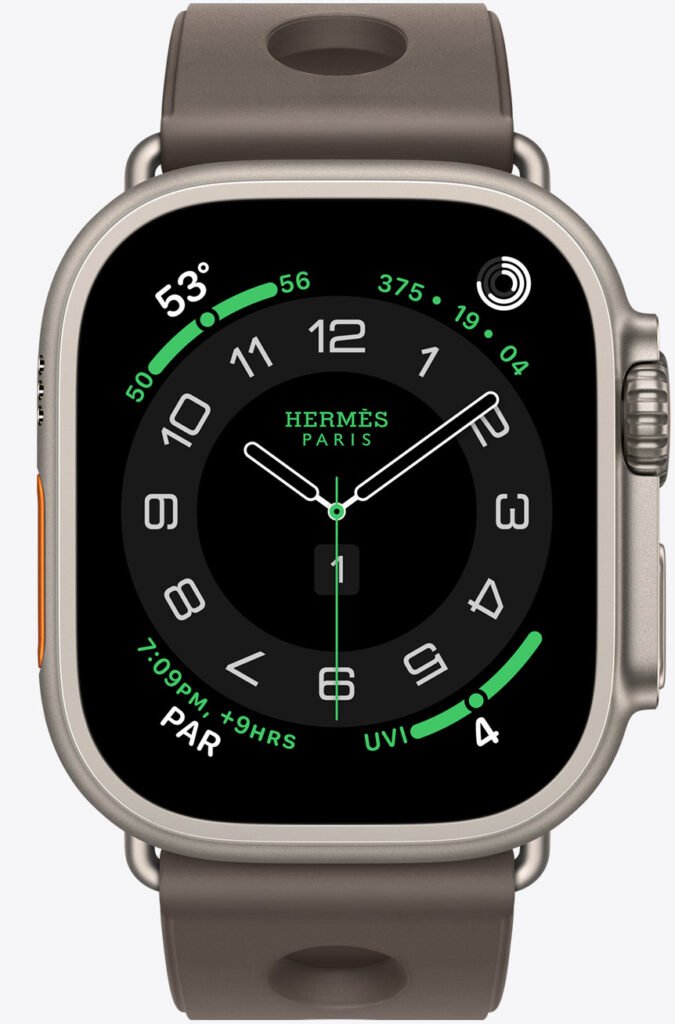
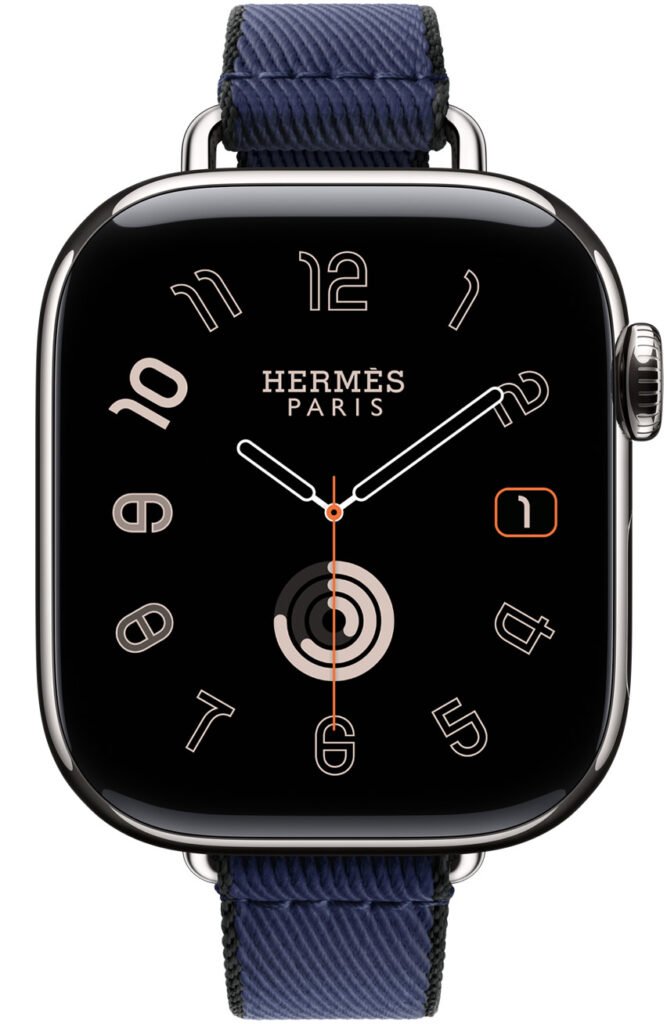
A Legacy of Craftsmanship Meets Modern Technology
The partnership between Apple and Hermès seemed unlikely when first announced. Apple, the Cupertino-based technology company known for sleek minimalism and mass-market appeal, joining forces with Hermès, the 188-year-old Parisian luxury house synonymous with equestrian heritage and artisanal leather craftsmanship. Yet this collaboration has proven to be one of the most successful in the luxury smartwatch space, creating a product that appeals to both tech enthusiasts and fashion connoisseurs.
The Series 11 Hermès Edition continues this tradition, building upon the foundation established by previous iterations while introducing refinements that showcase both companies’ commitment to excellence. Unlike standard Apple Watch models, the Hermès Edition isn’t merely a fashion accessory with interchangeable bands—it represents a holistic design philosophy where hardware, software, and materials work in harmony to create something greater than the sum of its parts.
Design Philosophy: The Details That Define Luxury
At first glance, the Series 11 Hermès Edition may appear similar to the standard Apple Watch Series 11, but closer inspection reveals numerous distinctive elements that justify its premium positioning. The watch face features an exclusive stainless steel case with a unique engraving on the back: “Apple Watch Hermès, Swiss Made.” This small detail carries significant meaning in the world of horology, acknowledging the Swiss origins of the watch’s assembly and paying homage to Switzerland’s centuries-old watchmaking tradition.
The case itself undergoes additional finishing processes not applied to standard models. Each unit receives extra polishing and quality control checks to ensure the mirror-like finish meets Hermès’ exacting standards. The result is a case that catches light differently, with a depth and warmth that photographs struggle to capture but becomes immediately apparent in person.
The display retains Apple’s industry-leading Always-On Retina technology, now in its latest iteration with improved brightness and power efficiency. However, Hermès Edition owners gain access to exclusive watch faces that aren’t available on any other Apple Watch model. These faces incorporate design elements drawn from Hermès’ rich heritage, including typefaces inspired by the brand’s iconic signage, color palettes reflecting classic Hermès shades like Orange 144 (the brand’s signature orange), and complications arranged with the same attention to balance and proportion that defines Hermès’ print and digital design.
The new Hermès Radial face, exclusive to Series 11, features a dynamic design that changes throughout the day, with flowing lines that evoke both traditional chronograph subdials and the organic curves found in Hermès silk scarves. The Lucky Horse watch face returns with enhanced animation, bringing Hermès’ equestrian heritage to life with subtle movements that respond to wrist raises and screen taps.
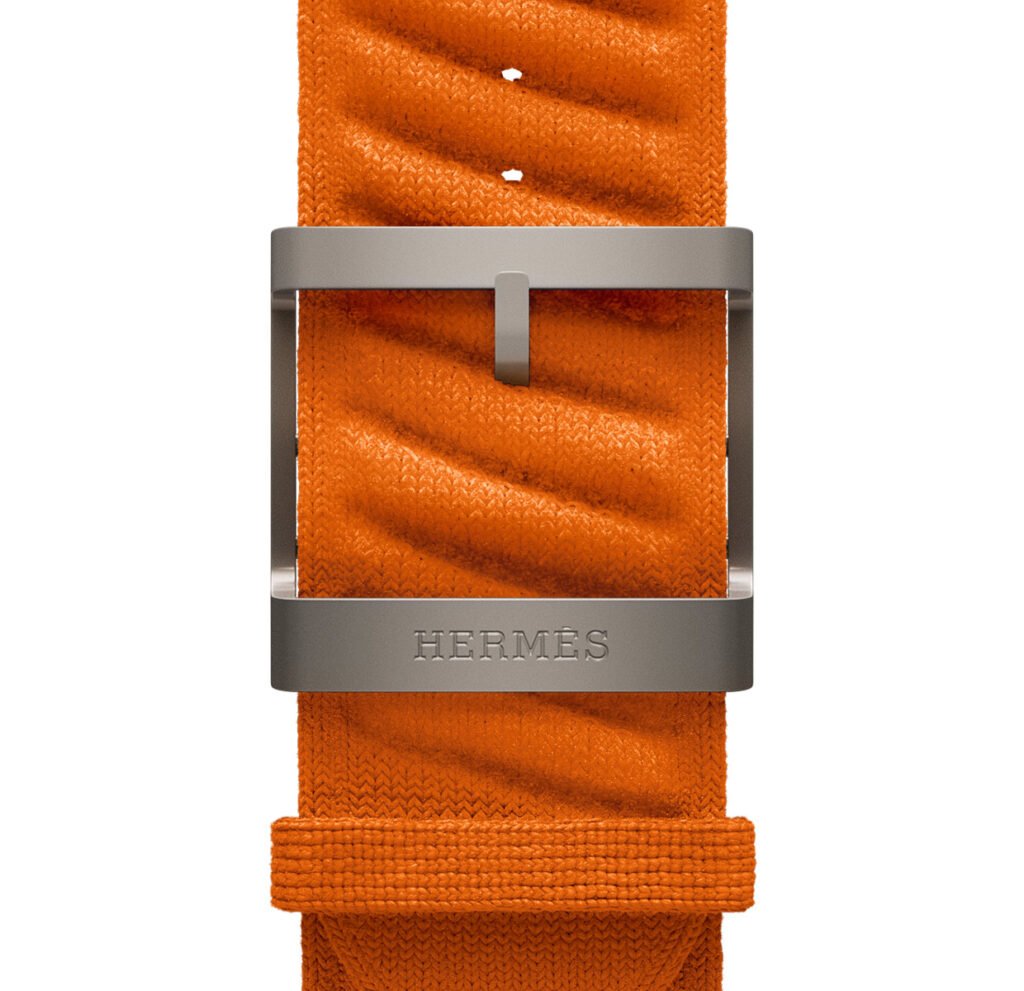

The Heart of the Matter: Hermès Leather Bands
While the watch case sets the foundation, the bands truly distinguish the Hermès Edition. Each strap is handcrafted in Hermès’ French ateliers using the same techniques and materials employed in the creation of the house’s legendary handbags and accessories. The leather selection process alone involves multiple stages of inspection, ensuring only the finest hides make it into production.
For the Series 11 launch, Hermès introduces several new strap options while maintaining beloved classics:
The Single Tour remains the most popular choice, offering a clean, elegant single wrap design that works equally well in boardrooms and bistros. Crafted from Swift leather—a fine-grained calfskin known for its suppleness and durability—the Single Tour features hand-stitched edges and a custom stainless steel buckle engraved with the Hermès name. New colorways for Series 11 include Étoupe (a sophisticated greige), Vert Moyen (a refined forest green), and Bleu de Malte (a deep, rich blue).
The Double Tour creates a more fashion-forward statement with its distinctive double-wrap design that circles the wrist twice. This style, particularly popular among fashion enthusiasts, adds visual weight and presence while maintaining the refined aesthetic Hermès is known for. The extra leather length also allows wearers to adjust the fit more precisely. For Series 11, Hermès debuts the Double Tour in Noir leather with gold hardware, creating a striking contrast that pairs beautifully with both casual and formal attire.
The Attelage represents one of the more equestrian-inspired designs, featuring a leather strap that interweaves through the lugs in a manner reminiscent of horse bridles and reins. The technique requires exceptional skill to execute, as the leather must be precisely cut and shaped to thread smoothly through the watch case while maintaining structural integrity. This band particularly appeals to those who appreciate Hermès’ equestrian heritage and want that connection visible in their everyday accessory.
The Kilim brings textile artistry to the collection, incorporating woven patterns inspired by traditional Anatolian kilim rugs. Unlike purely leather bands, the Kilim features fabric sections that showcase Hermès’ textile expertise while maintaining leather accents for durability and comfort. The Series 11 version introduces new color combinations that reflect contemporary tastes while respecting traditional patterns.
The Toile H represents perhaps the most casual offering, pairing printed canvas with leather accents. The canvas features Hermès’ signature “H” pattern in various colorways, making it ideal for active pursuits while maintaining the brand’s unmistakable aesthetic. Despite its more relaxed appearance, the Toile H undergoes the same rigorous quality control as its purely leather counterparts.
Each band includes Hermès’ signature details: hand-stitched edges using the brand’s characteristic saddle stitch technique, edges painted and polished to a smooth finish, and hardware that bears the Hermès engraving. The buckles and connectors receive individual attention, with artisans ensuring each piece moves smoothly and sits flush against the leather.
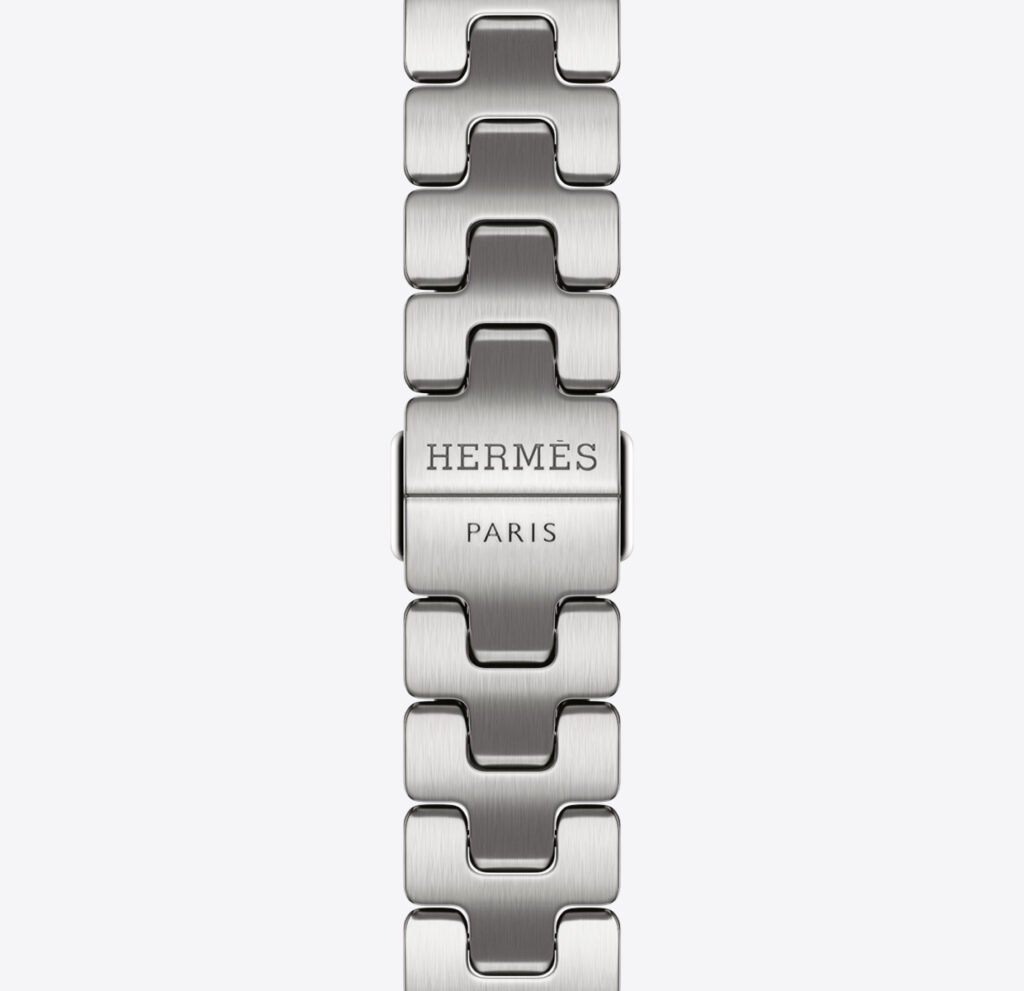

Technical Specifications: No Compromises
Despite its fashion credentials, the Series 11 Hermès Edition makes no compromises in technical capability. It features identical internal specifications to the flagship Apple Watch Series 11, ensuring Hermès Edition owners enjoy the full breadth of Apple’s latest health and fitness innovations.
The advanced health monitoring suite includes upgraded sensors for more accurate heart rate tracking, blood oxygen measurement, and temperature sensing. Sleep tracking has been refined with new algorithms that provide deeper insights into sleep stages and overall rest quality. The ECG app continues to offer medical-grade electrocardiogram readings, while fall detection and crash detection provide critical safety features.
Fitness enthusiasts will appreciate the enhanced GPS accuracy, improved workout tracking algorithms, and new exercise modes. The Series 11 introduces more sophisticated training load analysis, helping athletes optimize their routines and avoid overtraining. Swimming metrics have been expanded, with better stroke detection and automatic pool length adjustment.
Battery life remains consistent with the standard Series 11, offering all-day performance with typical use and up to 36 hours in Low Power Mode. The fast-charging capability allows the watch to reach 80% charge in approximately 45 minutes, minimizing downtime.
The S11 chip powering the watch delivers impressive performance improvements over previous generations, making animations smoother, app launches faster, and on-device Siri processing more responsive. The always-on display reaches higher brightness levels for improved outdoor visibility while somehow becoming more power-efficient—a testament to Apple’s chip design prowess.
Software Integration: Exclusive Experiences
Beyond exclusive watch faces, the Hermès Edition offers subtle software enhancements that enrich the user experience. Notifications can be customized with Hermès-designed haptic patterns, creating a more refined alert experience. The watch complications available to Hermès Edition owners include color schemes and design elements unique to this model.
The Hermès Sports app, exclusive to these watches, provides fitness tracking with a distinct visual style that aligns with the brand’s aesthetic sensibilities. Metrics are presented with custom typography and color treatments that feel decidedly more elegant than standard fitness displays.
When paired with an iPhone, Hermès Edition owners gain access to exclusive wallpapers and watch face complications that extend the design language across devices. This ecosystem approach ensures visual consistency whether you’re glancing at your wrist or checking your phone.
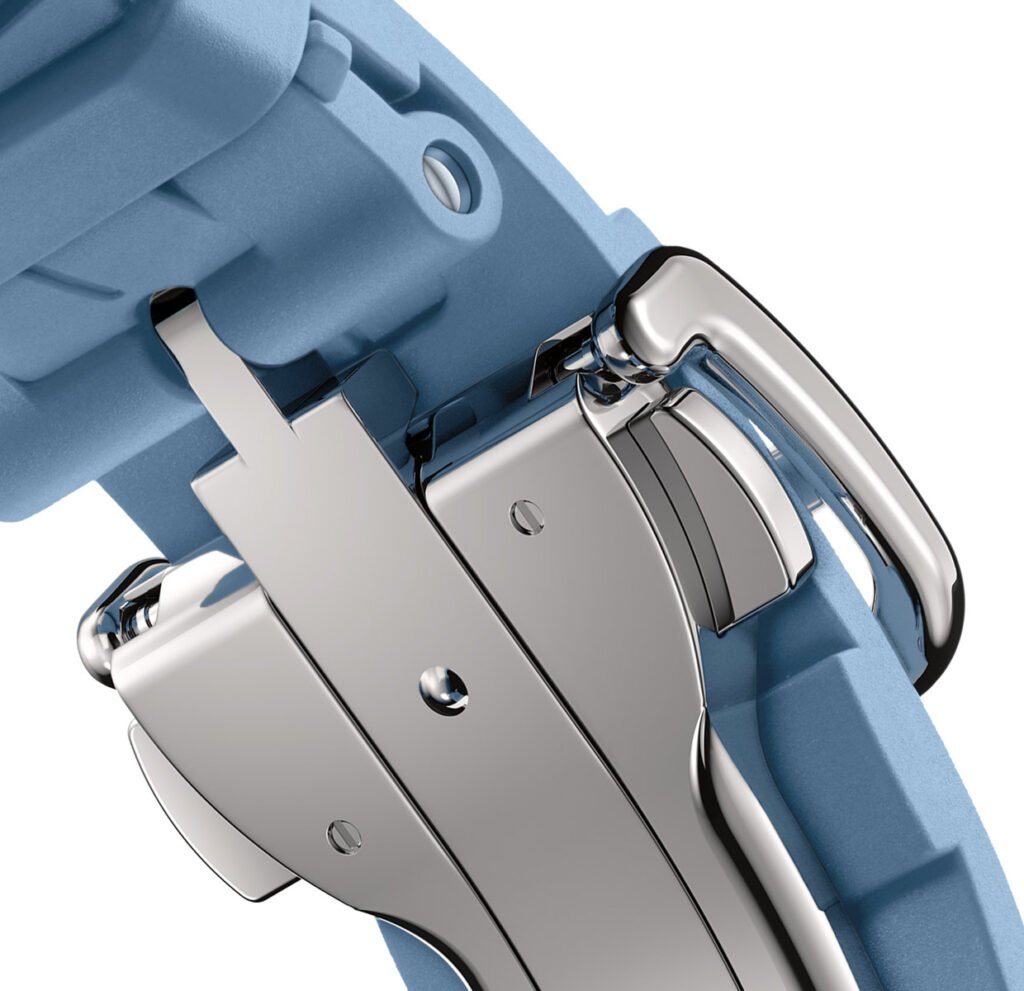
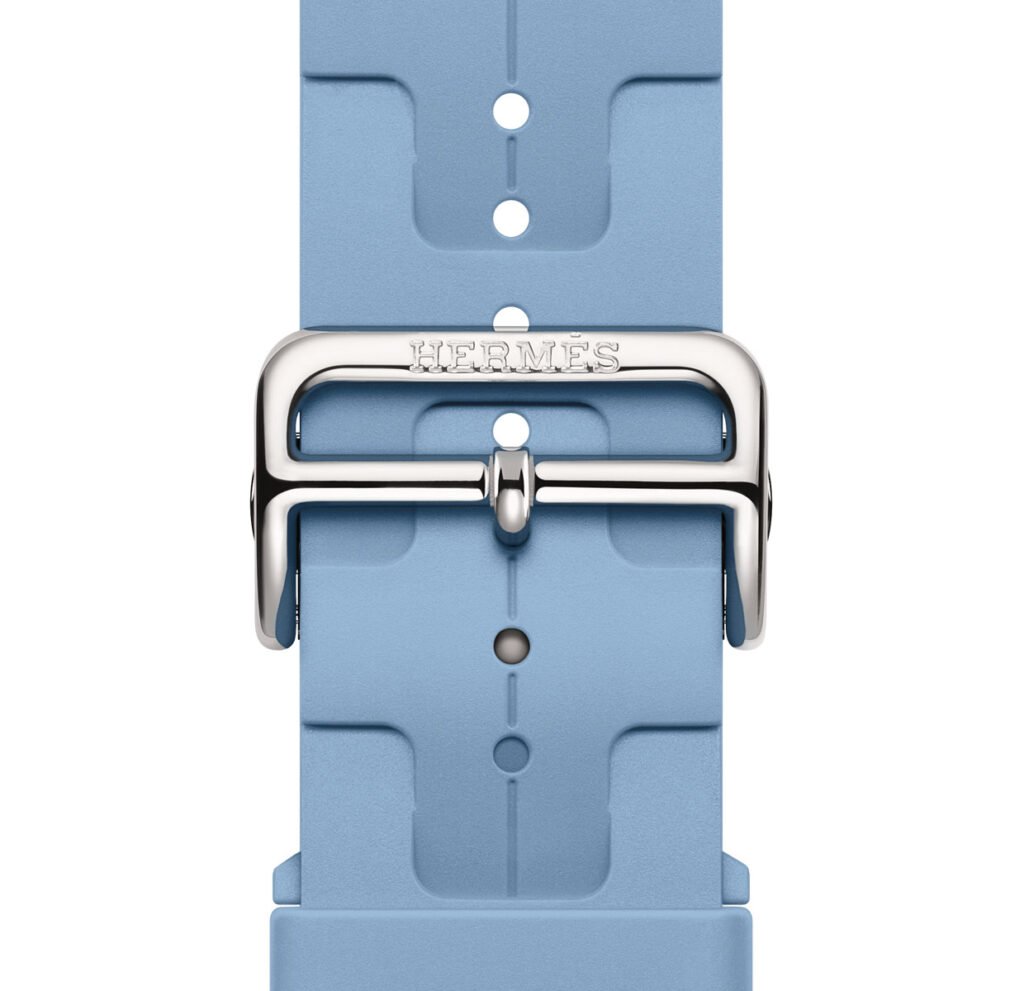
The Question of Value: Understanding the Premium
At a significant price premium over the standard Apple Watch Series 11—typically starting at $1,249 and reaching upward of $1,549 depending on case size and band selection—the Hermès Edition asks potential buyers to invest substantially more for what may appear to be primarily aesthetic differences. Understanding this value proposition requires looking beyond pure functionality.
For luxury goods enthusiasts, the Hermès name carries cachet built over nearly two centuries. Hermès leather goods are investment pieces known to appreciate in value and last for decades with proper care. While a smartwatch won’t appreciate financially due to inevitable technological obsolescence, the craftsmanship invested in each band represents genuine artisanal work that commands premium pricing across Hermès’ entire product line.
The exclusive watch faces and software elements, while intangible, provide daily value through refined aesthetics and the satisfaction of owning something distinctive. In an age where millions of people wear Apple Watches, the Hermès Edition offers differentiation—a way to express personal style and appreciation for craftsmanship within the framework of modern technology.
There’s also the consideration of build quality and attention to detail. The additional finishing applied to Hermès Edition cases, the hand-selection of materials, and the quality control processes all contribute to a product that feels more refined in hand. These differences may not photograph well or appear dramatic on a spec sheet, but they create a cumulative effect that luxury goods buyers recognize and value.
Sustainability and Longevity Considerations
One interesting aspect of the Hermès Edition is how it addresses—or complicates—questions of sustainability in consumer electronics. Smartwatches face criticism for their relatively short useful lives compared to traditional watches, which can function for decades or even centuries. The Hermès Edition takes a different approach by creating a product meant to be treasured and maintained rather than quickly replaced.
The bands, if properly cared for, will develop a patina and character over years of wear, much like fine leather goods should. Hermès offers band replacement and repair services, allowing owners to maintain their investment. Some collectors purchase multiple bands to rotate, extending the life of each while varying their style options.
Apple’s trade-in and recycling programs apply to Hermès Edition watches, though some owners choose to keep their devices even after upgrading, treating them as design objects or passing them to family members. The distinctive nature of the Hermès Edition may encourage this kind of lasting appreciation more than standard models that blend into the broader smartwatch category.

The Target Audience: Who Buys the Hermès Edition?
The Series 11 Hermès Edition appeals to a specific intersection of consumers: those who value both cutting-edge technology and traditional luxury craftsmanship. This includes fashion industry professionals who appreciate Hermès’ heritage and want their technology to align with their aesthetic sensibilities. It appeals to luxury goods collectors who see the watch as an accessible entry point into Hermès ownership while maintaining practical utility.
Tech enthusiasts with disposable income may choose the Hermès Edition as a way to differentiate their Apple Watch while knowing they’re getting identical technical specifications to the standard model. Some view it as a middle ground between fashion and function—more substantial than a simple band swap but less complex than collecting traditional mechanical watches.
The corporate executive market represents another key demographic, with the Hermès Edition offering a professional appearance suitable for high-stakes environments while providing all the connectivity and productivity features that make the Apple Watch indispensable for many business users.
Conclusion: The Intersection of Two Worlds
The Apple Watch Series 11 Hermès Edition succeeds because it doesn’t ask consumers to choose between technology and fashion—it offers both without compromise. Apple provides the technical foundation and digital ecosystem that makes the smartwatch genuinely useful, while Hermès layers on the craftsmanship, materials, and design sensibility that elevate it beyond pure functionality.
This collaboration represents something broader about how luxury brands are adapting to technological change. Rather than resisting or ignoring the digital transformation of personal accessories, Hermès has embraced it while staying true to its core values of quality, craftsmanship, and timeless design. The result is a product that feels authentic to both brands—unmistakably an Apple Watch in capability and user experience, yet distinctly Hermès in aesthetic and execution.
For consumers willing to invest in this premium offering, the Series 11 Hermès Edition delivers daily satisfaction through beautiful materials, exclusive design elements, and the knowledge that they’re wearing something special. It won’t replace a traditional mechanical watch in the hearts of horology purists, but it has carved out its own space in the luxury accessory landscape—a space where heritage craftsmanship and modern technology not only coexist but thrive together.
As smartwatches continue maturing as a product category, the Hermès Edition points toward a future where technology companies and fashion houses increasingly collaborate, bringing together their complementary strengths to create products that appeal to both mind and heart, function and feeling. The Series 11 represents the most refined expression of this vision yet, proving that even in our digital age, there remains substantial appetite for products that honor traditional craftsmanship while embracing innovation.

Before buying your next wearable, be sure to read all our smart watch tech reviews
Wearables
Google Pixel Watch 4: A Smartwatch That Finally Gets Repairs Right
Google’s latest wearable proves that meaningful innovation doesn’t always require a complete redesign. The Pixel Watch 4, now available starting October 9, brings refinements that transform the smartwatch experience while maintaining the beloved aesthetic that made its predecessors so recognizable.
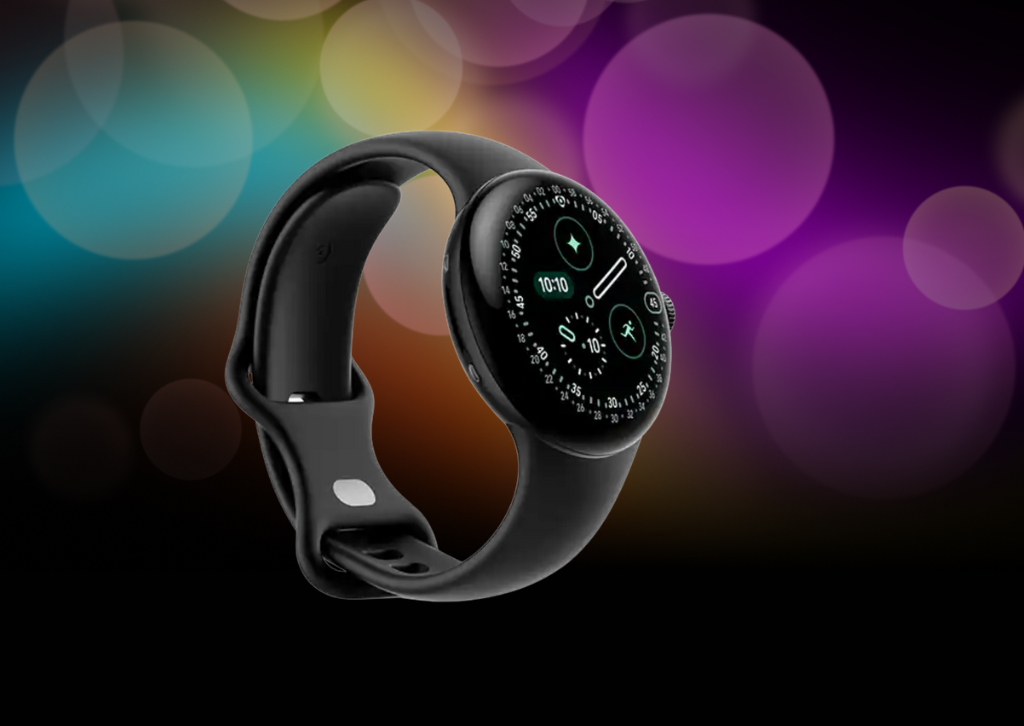
A Display That Demands Attention
The standout feature is the new Actua 360 domed display, which provides a larger viewing area with bezels reduced by sixteen percent. Unlike previous models where only the glass curved, the entire screen is now physically curved, creating an immersive visual effect. The display reaches an impressive 3000 nits of brightness, making it fifty percent brighter than its predecessor and far easier to read in direct sunlight.
The domed design creates a subtle three-dimensional effect that reviewers have compared to curved monitors—initially noticeable but quickly feeling natural with continued use. This design contributes to a ten percent increase in active display area, offering more space for notifications and app content without increasing the watch’s footprint.
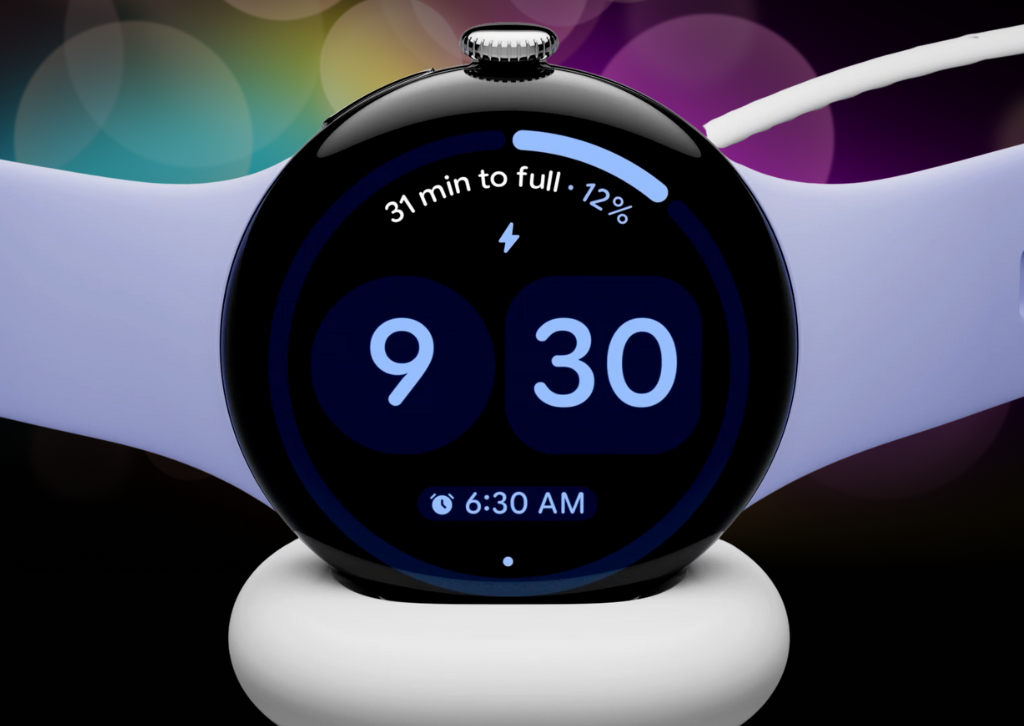
Battery Life That Actually Lasts
Battery improvements are substantial, with the 41mm model delivering 30 hours of use and the 45mm variant reaching 40 hours. With Battery Saver mode enabled, users can extend battery life to two days on the smaller model and three days on the larger version.
The charging system has been completely reimagined with a new side-mounted dock design. The Quick Charge Dock enables twenty-five percent faster charging than previous generations, reaching 50 percent battery in just 15 minutes. Real-world testing confirms these claims, with users reporting charges from 29 percent to 95 percent in under 20 minutes—effectively eliminating battery anxiety.
Repairability: A Long-Overdue Feature
Perhaps the most significant upgrade isn’t visible at first glance. The Pixel Watch 4 is the first in the series to feature a serviceable design with replaceable battery and display components. Small screws in the watch band connectors provide access to internal components, making repairs straightforward rather than requiring complete device replacement.
This change addresses one of the biggest criticisms of previous Pixel Watch models, where cracked screens or battery issues meant buying a new device. The shift toward repairability benefits both consumers and the environment, marking a meaningful commitment to device longevity.
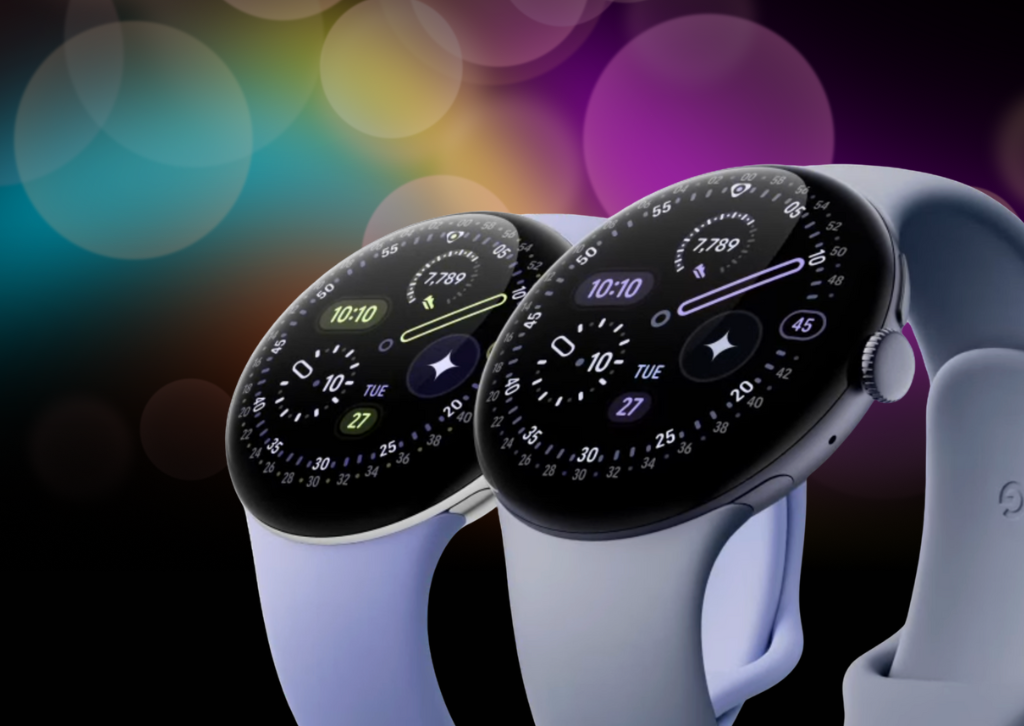
Gemini Integration Takes Center Stage
The watch introduces Gemini AI assistant integration with a raise-to-talk gesture, allowing users to activate the assistant simply by raising their wrist. This feature eliminates the friction of voice commands or button presses, making AI assistance truly seamless during activities like walking or exercising.
The implementation runs on the new Snapdragon W5 Gen 2 Wearable Platform paired with Google’s custom machine learning co-processor, which operates twenty-five percent faster while consuming half the power of the previous generation.
Wear OS 6: Form Meets Function
The software experience receives a significant visual overhaul with Wear OS 6 and Material 3 Expressive design language. The interface automatically adapts its color scheme to match the active watch face, creating a cohesive visual experience. Notifications feature a redesigned interface, and system apps like Weather showcase the new design philosophy.
AI-powered smart replies and notification cooldown features borrowed from Android 16 operate quietly in the background, managing digital interruptions without drawing attention to themselves.
Safety First: Satellite Communication
The Pixel Watch 4 LTE is the first smartwatch to support standalone emergency satellite communications, allowing users to contact emergency services even without cellular coverage. This potentially life-saving feature uses geo-stationary satellites to dispatch help to your exact location when traditional networks are unavailable.
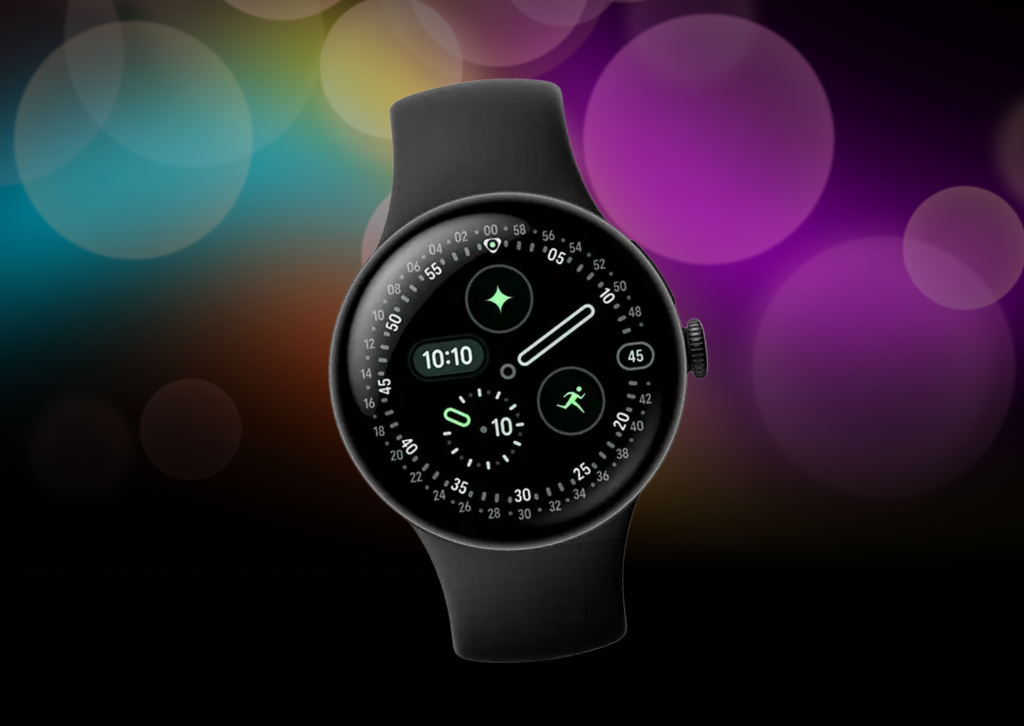
Fitness Tracking That Works
The health and fitness capabilities build on the Fitbit foundation with enhanced accuracy. Dual-frequency GPS provides more precise route tracking during runs and hikes, even in challenging environments. Activity detection has improved, with better recognition of various workout types and automatic tracking of walks.
Sleep tracking receives backend improvements, though changes are subtle rather than transformative. The upcoming AI-powered Fitbit Coach redesign promises to deliver personalized workout recommendations, though that feature remains in early access.
Pricing and Availability
Google maintains competitive pricing, with the 41mm WiFi model starting at $349 and the 45mm version at $399. LTE variants command a premium, with the larger model topping out at $499. The watch became available for preorder on August 20, 2025, with general availability beginning October 9.
Trade-in offers provide up to $350 credit for eligible devices, including the Apple Watch Series 10. LTE models include two years of data service through Google Fi Wireless at no additional cost.
The Verdict
The Pixel Watch 4 represents evolutionary refinement at its finest. While not revolutionary, the combination of improved display technology, genuine repairability, extended battery life, and seamless AI integration creates a smartwatch that finally delivers on Google’s wearable vision. The familiar design hides substantial improvements that address previous generations’ most significant shortcomings.
For owners of the Pixel Watch 3, upgrading makes little sense. However, those using earlier models or considering their first Pixel Watch will find the fourth generation offers compelling reasons to join Google’s wearable ecosystem. The watch succeeds by making small things work better rather than chasing headlines with gimmicks—a refreshing approach in the smartwatch market.

Read all of our smartphone reviews before making your next purchase.
Wearables
Samsung Galaxy Watch Ultra: The Ultimate Rugged Smartwatch for Adventurers and Athletes
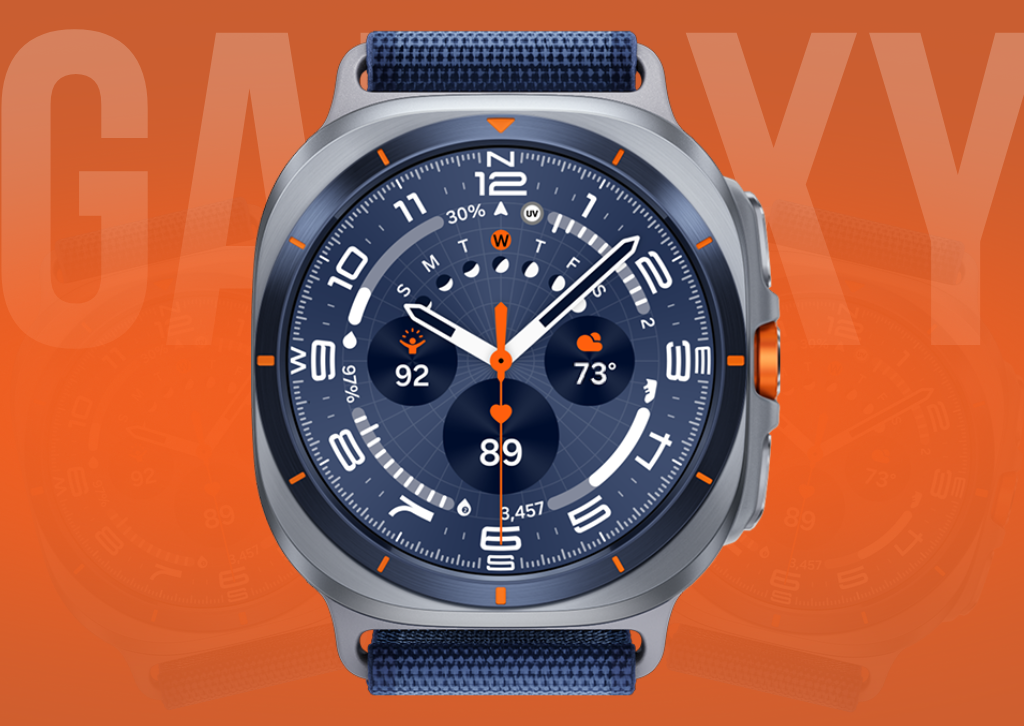
Samsung’s Galaxy Watch Ultra represents a bold entry into the premium rugged smartwatch market, delivering a feature-packed wearable that challenges both Apple’s Watch Ultra and Garmin’s dominance in the outdoor adventure segment. Announced in July 2024, this Android smartwatch features a 1.5-inch display, Exynos W1000 chipset, 590 mAh battery, 64 GB storage, and 2 GB RAM, all housed in a MIL-STD-810H compliant case with sapphire crystal glass.
Design and Durability: Built for Extreme Conditions
The Galaxy Watch Ultra embodies Samsung’s commitment to creating a timepiece that can withstand the harshest environments. The watch has obtained MIL-STD-810H Certification for high and low temperature, altitude, humidity, immersion, salt fog, dust, vibration, and drop resistance. This military-grade testing ensures the device can handle real-world challenges that outdoor enthusiasts regularly face.
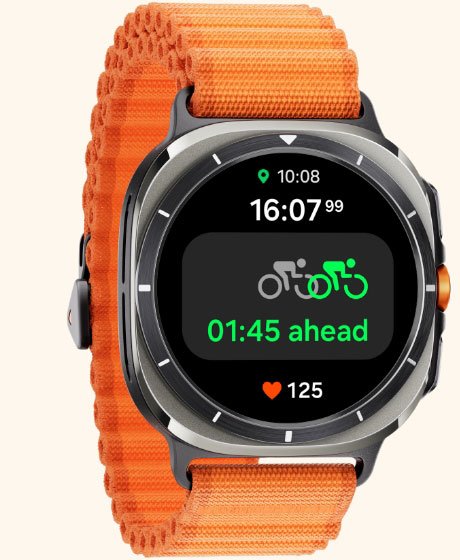
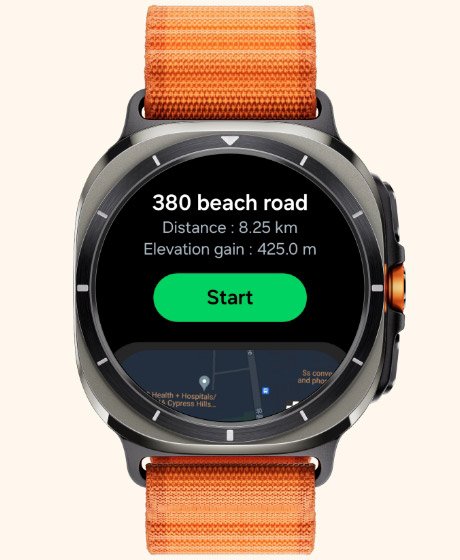
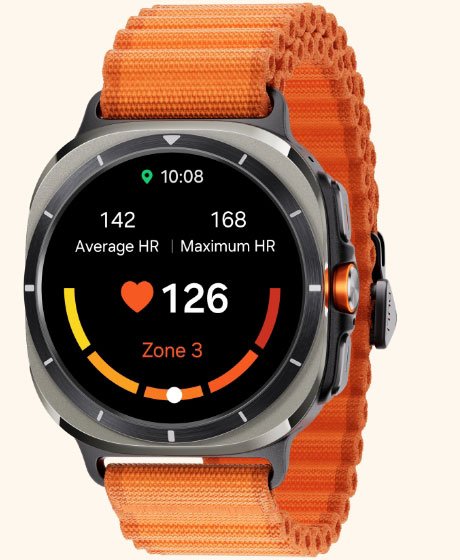
Grade 4 titanium is partially applied to the front and back cover areas of the metal frame, excluding the display and physical buttons, while the remaining parts feature a mix of plastic and Grade 2 titanium. This hybrid construction balances durability with wearability, though some users with smaller wrists may find the 47mm case substantial.
The watch’s environmental resistance is equally impressive. Galaxy Watch Ultra withstands temperatures ranging from -20°C to 55°C while being worn on the wrist. Whether you’re scaling frozen peaks or trekking through desert landscapes, this smartwatch is engineered to keep functioning when you need it most.
Display: Brilliance Under Any Conditions
One of the standout features is the exceptionally bright display. The Galaxy Watch Ultra has gained a much more brilliant display at 3,000 nits, ensuring visibility on beaches or mountain tops. This brightness advantage makes a tangible difference when checking metrics during outdoor activities in direct sunlight, addressing a common complaint with earlier Galaxy Watch models.
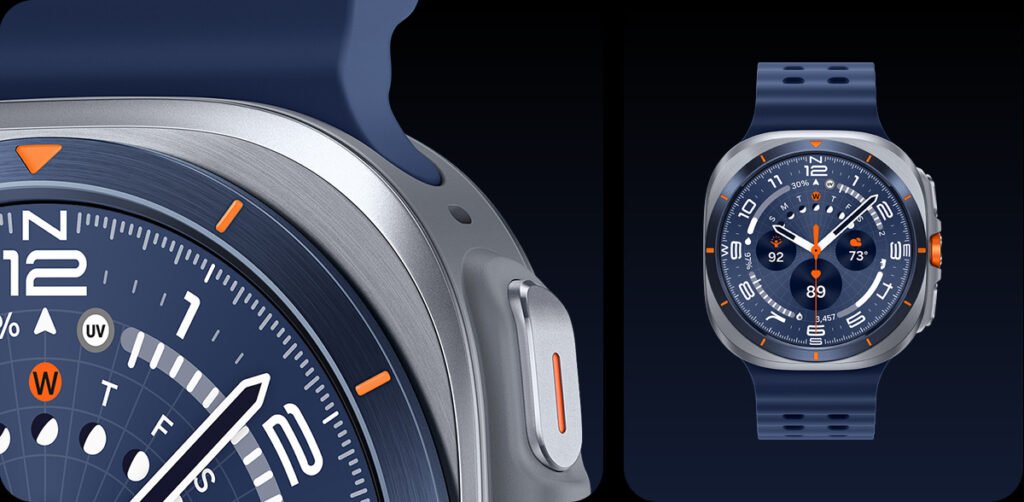
Enhanced Button Layout and Controls
The watch has gained a new “Quick” button, which can be customized to open a specific app or function and by default opens the Workout menu to select a sport to start. Samsung’s thoughtful placement of this orange Quick button between the button guards of the other two buttons prevents accidental presses, a notable improvement over competing designs.
The top button takes you home from whatever screen you’re on, and the bottom one goes back one screen, while the center Quick Button is configurable but defaults to launching workouts. However, users should note that unlike many other watches, there’s no rotating crown or bezel—navigation relies primarily on buttons and swiping.
Water Resistance and Outdoor Features
The Galaxy Watch Ultra is consistent with 10 ATM water-resistance classification, rated for up to 100 meters of water for up to 10 minutes, and carries an IP68 rating for up to 6 feet of water for up to 30 minutes. While Samsung markets the watch for ocean adventures and water sports, it’s worth noting that the specific ISO certification differs from traditional dive watches.
For hikers and cyclists, the watch includes practical safety features. The Track Back feature must be enabled prior to every hiking or cycling workout session, while the emergency siren emits up to 86-decibel sound and can be heard up to 180 meters away maximum.
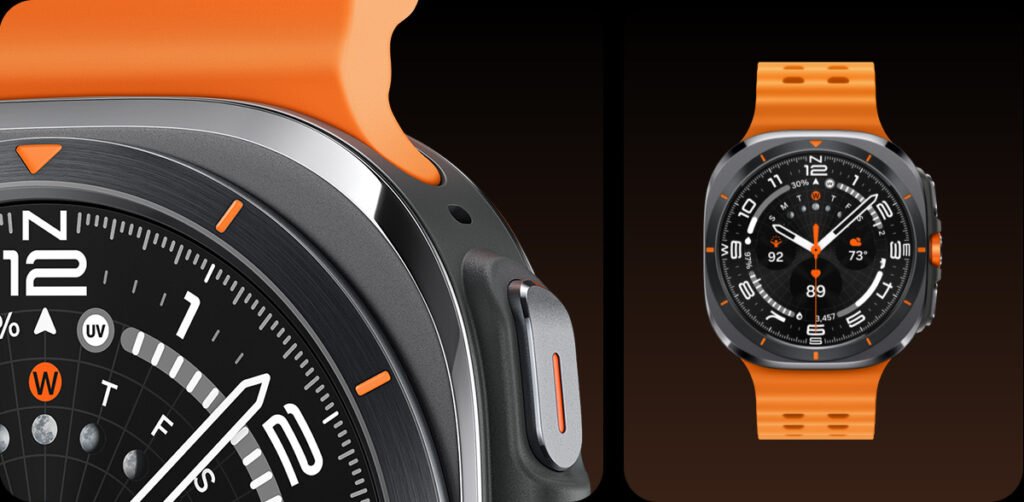
Health and Fitness Tracking: Comprehensive Wellness Monitoring
The Galaxy Watch Ultra introduces several groundbreaking health features that set it apart from competitors. For the first time on Galaxy Watch, it offers a Sleep apnea feature that requires at least 2 days of sleep data within a span of 10 days for detection. While this feature is not intended for diagnosis or treatment, it provides valuable insights for users to discuss with healthcare professionals.
The watch introduces the Advanced Glycation End-products (AGEs) index, which for the first time on Galaxy Watch allows users to see how their diet could affect metabolic health. This feature helps users monitor meal choices and maintain peak performance through lifestyle adjustments.
Additional wellness features include the Vascular Load metric, which estimates strain on your circulatory system during sleep by analyzing sleep tracking data, stress levels, and exercise patterns. The Energy Score and other Galaxy AI-powered insights help users understand their overall readiness and recovery status.
The watch can automatically detect and log various workouts including walking, running, swimming, elliptical, and rowing, with a longer list of supported activities than other Wear OS devices. The addition of multisport workout plans makes it particularly appealing for triathletes and cross-training enthusiasts.
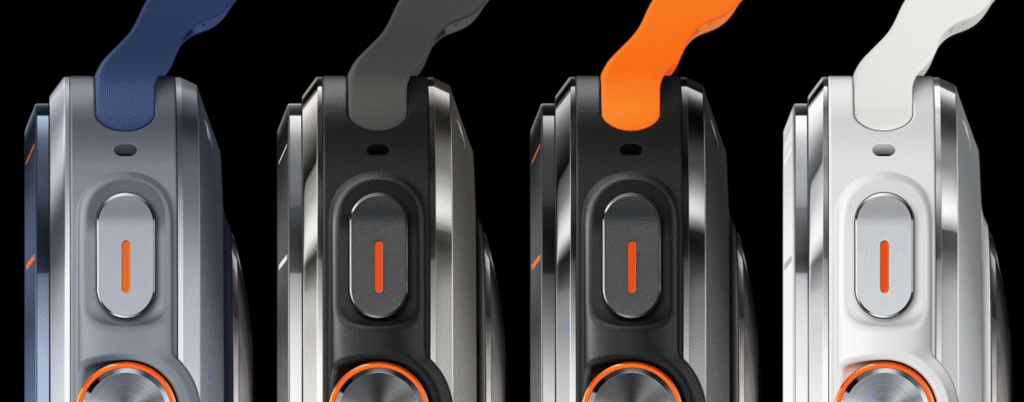
Battery Life: Extended Endurance for Long Adventures
In normal battery mode with Always On Display enabled, battery life reaches up to 60 hours, while disabling Always On Display extends it to up to 80 hours. This multi-day battery life represents a significant advantage over many competitors, reducing the need for frequent charging during extended outdoor adventures.
For ultra-endurance activities, the watch offers power-saving modes that can extend battery life even further, though with some feature limitations such as restricted Wi-Fi connection, wake-up gestures, CPU speed, and location services.
Software Experience: Galaxy AI Integration
The Galaxy Watch Ultra runs on Wear OS, customized with Samsung’s One UI Watch interface. One UI makes several significant changes from stock Wear OS, including a more powerful notification system that retains notification bundles from your phone, making it easier to triage long lists of emails or messages.
The watch offers Suggested Replies with Galaxy AI, providing quick text-reply suggestions based on conversation context. Users can control various functions with a double pinch gesture, adding convenient hands-free operation for taking photos, answering calls, or silencing alarms.
One notable quirk: the Galaxy Watch Ultra still defaults to using Bixby as the voice assistant, though users can and should switch to Google Assistant in the settings.
Performance and Storage
Powered by the Exynos W1000 chipset built on a 3nm process, the Galaxy Watch Ultra delivers smooth performance for everyday tasks and workout tracking. The watch comes with 2GB of RAM and generous storage options. The 2024 model includes 32GB of internal storage, while the 2025 refresh doubles this to 64GB, providing ample space for offline music, maps, apps, and workout data.
Ecosystem Integration and Limitations
Some of the Watch Ultra’s features will only work with a Samsung phone, including running ECGs and detecting health issues like sleep apnea and irregular heart rhythms, along with certain Galaxy AI features like the energy score. This ecosystem lock-in may frustrate Android users who prefer other smartphone brands, though the watch remains compatible with any Android device for basic functionality.
The Galaxy Wearable app manages watch connections and settings with a sleek, modern interface that simplifies customization. Meanwhile, the Samsung Health app, though somewhat clunky initially, provides comprehensive tracking and analysis of all your health and fitness data.
Real-World Performance: Accuracy and Reliability
During testing, the watch performed well for normal workouts with automatic laps and reliable instant pace tracking during runs. The inclusion of multiband/dual-frequency GNSS and an improved optical heart rate sensor enhances accuracy for outdoor activities.
However, the watch isn’t without occasional quirks. Some users have reported activities mysteriously stopping or ending during rides, though such incidents appear relatively rare. The multiband GPS generally delivers accurate tracking, though dense tree cover or urban canyons can still impact satellite signal quality.
The 2025 Refresh: Incremental But Valuable Updates
Samsung released an updated Galaxy Watch Ultra in 2025 with modest but meaningful improvements. The 2025 model doubles internal storage to 64GB from the previous 32GB, powered by the same 3nm Exynos W1000 processor with 2GB of RAM and a 590mAh battery.
The Watch Ultra (2025) comes pre-installed with Wear OS 5, layered with Samsung’s updated One UI Watch 8 skin, including the Now Bar feature that shows context-aware controls like timers and media playback on your watch face. Importantly, most of these software features are expected to arrive on the original Galaxy Watch Ultra through updates.
New health features include Vascular Load for estimating circulatory system strain during sleep, Antioxidant Index for skin antioxidant levels, Bedtime Guidance powered by Galaxy AI for personalized sleep scheduling, and a new Running Coach mode with real-time training feedback.
The 2025 version introduces a new Titanium Blue color option alongside the existing Titanium Gray, Silver, and White finishes. The refreshed model costs the same—$649.99—as the original Watch Ultra, making it an even better deal for new buyers.
Who Should Buy the Galaxy Watch Ultra?
The Galaxy Watch Ultra targets a specific audience: active individuals who demand durability, comprehensive health tracking, and multi-day battery life. It excels for outdoor enthusiasts, serious athletes, and anyone who needs a watch that can withstand extreme conditions while providing detailed fitness and wellness insights.
However, the high $650 price tag and chunky 47mm design might make it a tough sell for some users. The Galaxy Watch 7 offers most of the same features at a lower price point with a sleeker design, making it a better choice for casual users or those with smaller wrists.
For Samsung phone owners, the Watch Ultra’s ecosystem integration unlocks its full potential, including advanced health monitoring features like ECG and sleep apnea detection. Android users with other phone brands will still enjoy excellent functionality but may miss out on some premium features.
Final Verdict
The Samsung Galaxy Watch Ultra represents a serious competitor in the premium smartwatch market, offering military-grade durability, exceptional battery life, a brilliant display, and comprehensive health tracking. While it clearly draws inspiration from Apple’s Watch Ultra design language, Samsung has created a capable device that stands on its own merits.
For adventurers, athletes, and anyone seeking a rugged smartwatch that can keep up with an active lifestyle, the Galaxy Watch Ultra delivers impressive performance and features. The 2025 refresh adds valuable storage and software improvements at the same price, making it an even more compelling choice for new buyers. However, existing 2024 model owners can largely skip the upgrade, as most new features will arrive via software updates.
Whether you’re training for a triathlon, hiking mountain trails, or simply want a smartwatch that can handle whatever life throws at it, the Galaxy Watch Ultra proves that Samsung is serious about competing in the premium wearable market.

Before buying your next wearable, be sure to read all our smart watch tech reviews
-

 Photography3 months ago
Photography3 months agoSony FE 16mm f/1.8 G Review: The Ultra-Wide Prime for the Modern Creator
-
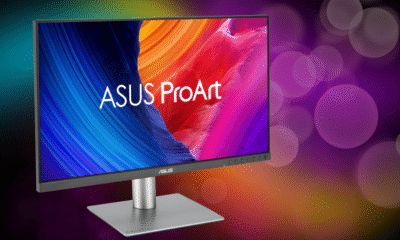
 Computers3 months ago
Computers3 months agoAsus ProArt Display 6K PA32QCV Review: A Visual Feast for Professionals
-

 Tablets5 months ago
Tablets5 months agoClash of the Titans: 13″ iPad Pro M4 vs. Samsung Galaxy Tab S10 Ultra – Which Premium Tablet Reigns Supreme?
-

 Home Tech3 months ago
Home Tech3 months agoThe Guardian of Your Threshold: An In-Depth Review of the Google Nest Doorbell
-

 Computers4 months ago
Computers4 months agoASUS Zenbook Duo: A Pretty Awesome Dual-Screen Laptop
-

 Photography4 months ago
Photography4 months agoAdobe’s “Project Indigo” is the iPhone Camera App We’ve Been Waiting For, and It’s Awesome
-

 Photography3 months ago
Photography3 months agoDJI Osmo 360 go: The Next Generation of Immersive Storytelling?
-

 Health Tech3 months ago
Health Tech3 months agoLumen Metabolism Tracker: A Deep Dive into Your Metabolic Health
-

 Computers4 months ago
Computers4 months agoApple Mac Studio Review: A Desktop Powerhouse Redefined
-

 Home Tech3 months ago
Home Tech3 months agoRevolution R180 Connect Plus Smart Toaster: More Than Just Toast?
-

 Computers4 months ago
Computers4 months agoSamsung 15.6” Galaxy Book5 360 Copilot AI Laptop: A Deep Dive into the Future of Productivity
-

 Buying Guides4 months ago
Buying Guides4 months agoThe Ultimate Workout Soundtrack: The Best Wireless Headphones for Your Fitness Journey









